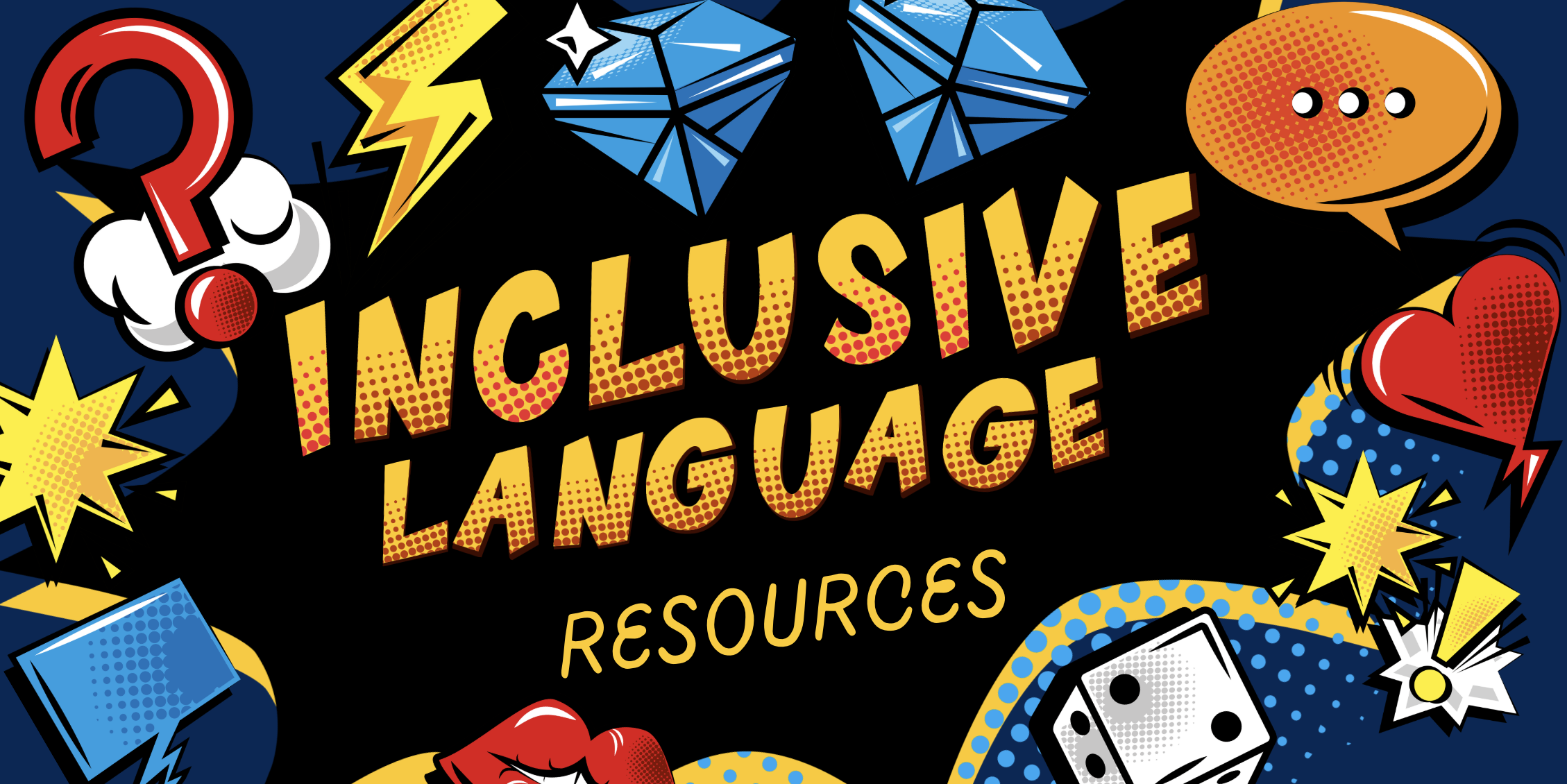
Using inclusive language communicates with people in a way that is respectful and brings everyone into the conversation.
Inclusive language also avoids making assumptions about people, steering clear of defaults that could make a person feel alienated or unwelcome. Our spaces are designed to meet the needs of students that often feel othered in every day society, we want to make sure we use language that makes them feel welcome.
For more information on how to properly use inclusive language, see the full presentation linked below!
Conventions of Inclusive Language - PDF Version.pdf
Conventions of Inclusive Language - Canva Presentation
Types of Inclusive Language
Accessible language
Accessible language refers to using clear, straightforward, and understandable language that is easily comprehensible to a wide audience, including those with varying levels of literacy, cognitive abilities, or language proficiency.
History-conscious language
Accessible language refers to using clear, straightforward, and understandable language that is easily comprehensible to a wide audience, including those with varying levels of literacy, cognitive abilities, or language proficiency.
Intentional language (that avoids unnecessary descriptions)
Intentional language refers to the deliberate and thoughtful choice of words and phrases with the aim of conveying specific meanings, fostering understanding, and promoting positive communication.
Gender-neutral language
Gender-neutral language is language that avoids bias towards a particular gender. It aims to include all genders and avoid assumptions about gender roles or identities.
Person-first language
Person-first language, also known as people-first language, is a linguistic practice that emphasizes the person over their condition, circumstance, or diagnosis.
Proper acknowledgment of people and cultures
Proper acknowledgment of people and cultures involves recognizing and respecting their identities, histories, values, and contributions.
Respectful language
Respectful language refers to the use of words and expressions that demonstrate consideration, honor, and regard for others. It involves communicating in a way that acknowledges the dignity, feelings, and rights of individuals or groups.
Non-stereotypical language
Non-stereotypical language refers to using words and expressions that avoid reinforcing traditional or biased assumptions about individuals or groups based on their gender, race, ethnicity, sexual orientation, disability, or other characteristics.
Diverse and accurate representation
Diverse and accurate representation refers to portraying a wide range of identities, experiences, and perspectives in a fair, respectful, and authentic manner.



